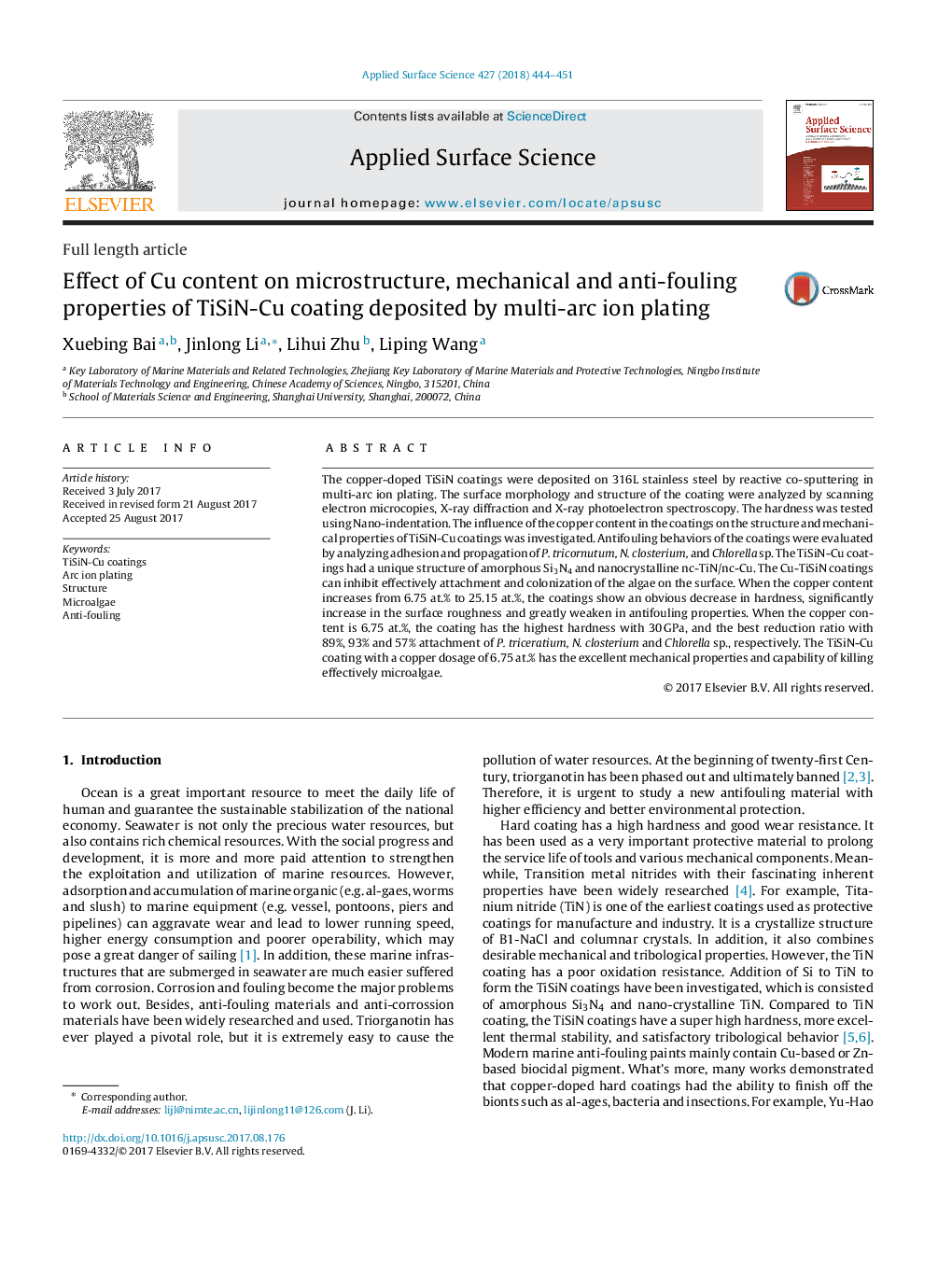| Article ID | Journal | Published Year | Pages | File Type |
|---|---|---|---|---|
| 5349247 | Applied Surface Science | 2018 | 8 Pages |
Abstract
The copper-doped TiSiN coatings were deposited on 316L stainless steel by reactive co-sputtering in multi-arc ion plating. The surface morphology and structure of the coating were analyzed by scanning electron microcopies, X-ray diffraction and X-ray photoelectron spectroscopy. The hardness was tested using Nano-indentation. The influence of the copper content in the coatings on the structure and mechanical properties of TiSiN-Cu coatings was investigated. Antifouling behaviors of the coatings were evaluated by analyzing adhesion and propagation of P. tricornutum, N. closterium, and Chlorella sp. The TiSiN-Cu coatings had a unique structure of amorphous Si3N4 and nanocrystalline nc-TiN/nc-Cu. The Cu-TiSiN coatings can inhibit effectively attachment and colonization of the algae on the surface. When the copper content increases from 6.75 at.% to 25.15 at.%, the coatings show an obvious decrease in hardness, significantly increase in the surface roughness and greatly weaken in antifouling properties. When the copper content is 6.75 at.%, the coating has the highest hardness with 30Â GPa, and the best reduction ratio with 89%, 93% and 57% attachment of P. triceratium, N. closterium and Chlorella sp., respectively. The TiSiN-Cu coating with a copper dosage of 6.75 at.% has the excellent mechanical properties and capability of killing effectively microalgae.
Related Topics
Physical Sciences and Engineering
Chemistry
Physical and Theoretical Chemistry
Authors
Xuebing Bai, Jinlong Li, Lihui Zhu, Liping Wang,
